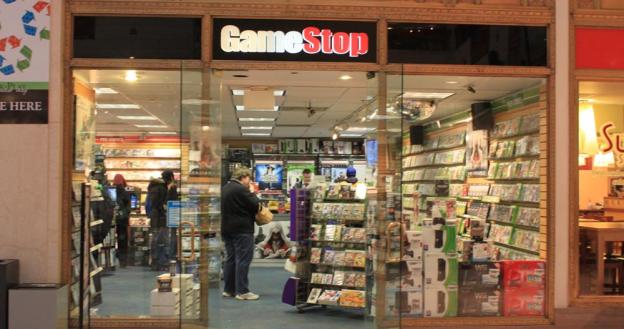
Here is the state of things halfway through 2012: 1 in 3 video game players prefer to download their video games rather than buy them as disks or cartridges at a store like GameStop. Video game sales tracking research firm the NPD Group said on Jul. 2 that, just like in 2010, more than 60 percent of people spending money on video games would rather buy it in a store.
That’s a comfort to GameStop, who still relies on the sale of disks and consoles, particularly used disks and consoles, to keep its brick and mortar retail chain alive. The number of players downloading their games directly from the Internet without going to a store is only going to increase though. Smartphone ownership in the US alone grew from 35 percent to 46 percent between May 2011 and February 2012. The more digital distribution platforms there are, the more people will acclimate to a purely digital retail way of life.
So what’s a GameStop to do? Sell more and more digital goods at stores. Vouchers and gift cards for credit on digital services like Steam and for full games like Nintendo’s New Super Mario Bros. 2. This plan will work because, according to GameStop Digital Ventures manager Chris Petrovic, there are many, many people buying games with cash and other payment methods besides credit cards and digital retailers like iTunes only take your Visa or Mastercard.
“70 percent of purchases of digital product that are made in our stores involve some other form of payment besides a credit card,” Petrovic told VentureBeat, “So when you think about all of the other ways that you could pay for stuff, when the purely digital platforms are limited to a credit card as the primary means… We see a lot of people coming in with cash, we see a lot of people coming in with gift cards, with trade credit. We have an ecosystem that’s very unique in terms of unlocking value that others can’t, and we do that with and for our partners as well as for our own digital platforms.”
That unique ecosystem is of course GameStop’s famous pawn shop-style system of giving customers cash and store credit in exchange for their consoles and games, a practice that yields nothing but profit for GameStop when those goods are resold. Even if GameStop manages to sell nothing but vouchers for digital goods in the future though, how can it expect to survive without the sale of used physical product?
Consoles are the answer according to Petrovic. “We’re talking about digital, but there still needs to be a physical device through which you game. Whether it’s a console, whether it’s a smartphone, whether it’s a tablet, whether it’s a next-gen Android device like Ouya… All these things require some kind of physical product to use.”
When asked whether the resale business can be just as successful with just hardware, Petrovic responded, “It’s definitely TBD.”


